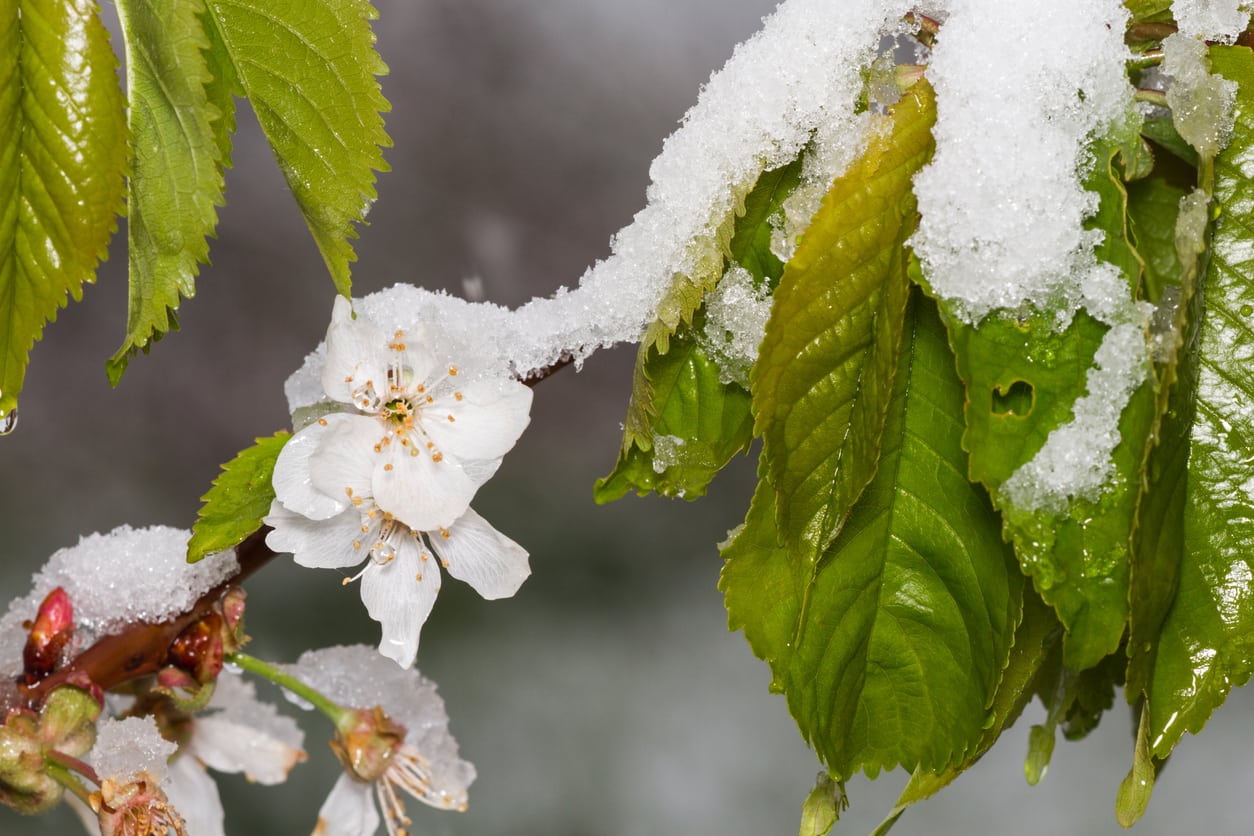Cherry Cold Requirements: How Many Chill Hours For Cherries


It is a great pleasure to grow and pick your own juicy, sweet cherries from your backyard garden or small orchard. But to grow fruit successfully, there are many factors to consider. The chill hours for cherry trees is one of those, and if your cherry doesn’t get enough cold days during the winter, you may not get much fruit.
Chilling Time for Fruit Trees
Fruit plants, and nut trees as well, need a certain amount of time spend dormant in temperatures from about 32 to 40 degrees Fahrenheit (0 to 4.5 Celsius) in order to develop flowers and fruit in the spring, summer, and fall. Chill time is measured in hours, and some fruits don’t need much. For instance, strawberries require just 200 hours, and this is why they can grow in warmer climates. Some need a lot of hours, though, and will only grow in colder climates as a result. Cherry chill hours are up there with the higher numbers, so to get fruit you can’t grow these trees in warm zones unless you choose the right cultivar.
Chilling Requirements for Cherry Trees
Cherries are adapted to colder climates, so they won’t break out of dormancy until a sufficient amount of time with cold temperatures has passed. There is variation in chilling hours for different types of trees and also between cultivars of one type of fruit, like cherries. Cherry cold requirements are generally between 800 and 1,200 hours. Zones 4-7 are generally safe bets for getting adequate chill hours for cherry trees. Knowing how many chill hours for cherries is necessary will depend on the cultivar, but for most types, in order to get the maximum yield of flowers and fruits, at least 1,000 hours is important. Some cultivars of cherry that can get by on fewer chill hours, known as low-chill cherries, include ‘Stella,’ ‘Lapin,’ ‘Royal Rainier,’ and ‘Royal Hazel,’ which need 500 or fewer hours. The latter does require a separate cultivar for pollinating, though. There are also some varieties that will give you a decent fruit yield with just 300 chill hours. These include ‘Royal Lee’ and ‘Minnie Royal.’ Both require pollinators but, because they have similar chill requirements, they can be planted together for pollination.
Gardening tips, videos, info and more delivered right to your inbox!
Sign up for the Gardening Know How newsletter today and receive a free copy of our e-book "How to Grow Delicious Tomatoes".

Mary Ellen Ellis has been gardening for over 20 years. With degrees in Chemistry and Biology, Mary Ellen's specialties are flowers, native plants, and herbs.
-
 Looking For Plants To Give You The Soft And Fuzzies? Try These 5 Fuzzy Leaf Plant Options
Looking For Plants To Give You The Soft And Fuzzies? Try These 5 Fuzzy Leaf Plant OptionsLovers of texture, drama, silver foliage and tactile plants will adore these special sensory garden additions. These fuzzy leaf plant options will leave you all aglow
By Susan Albert
-
 Get Ready For A Summer Of Hummers! Grow These Full Sun Hummingbird Plants and Flowers
Get Ready For A Summer Of Hummers! Grow These Full Sun Hummingbird Plants and FlowersIf you’re lucky enough to enjoy a sunny backyard, make sure you are maxing out on your pollinator opportunities and grow these full sun hummingbird plants and flowers
By Tonya Barnett